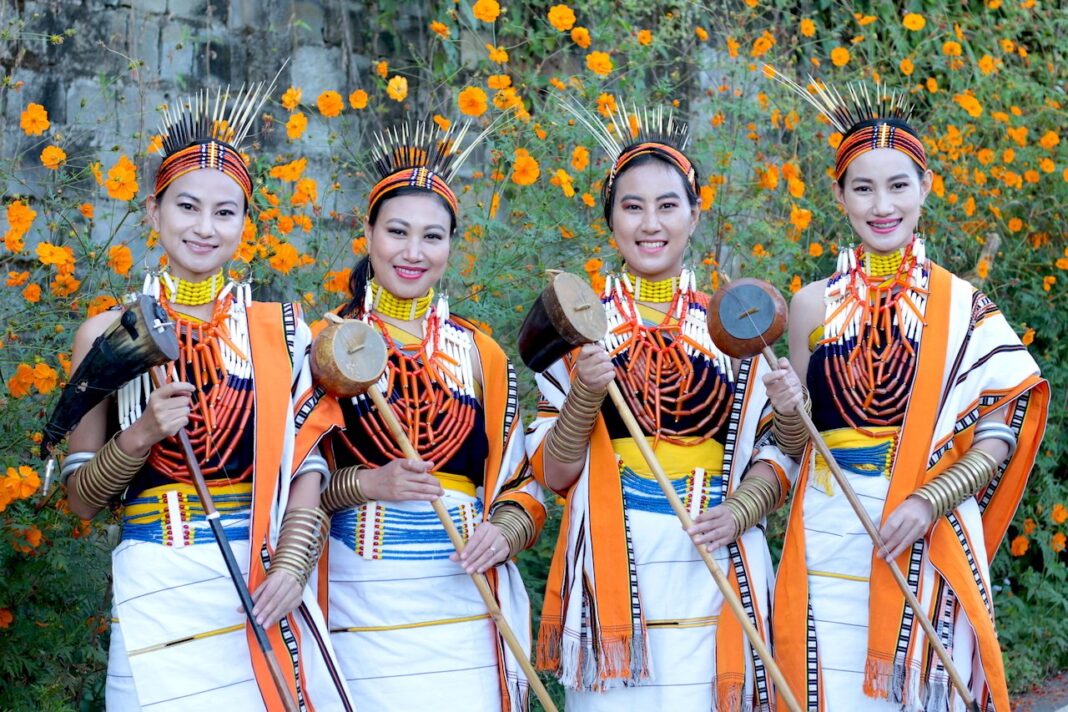NEW DELHI: When the Tetseo Sisters began their career in the 1990s, they had the choice of singing in English, but it soon became clear to them that music, a universal language, could serve a purpose more important than fame by helping to save Chokri, their dying native tongue.
Chokri, a Sino-Tibetan language, is one of over a dozen spoken in Nagaland, a northeastern Indian state with a population of about 2.2 million. It is estimated to have between 20,000 and 25,000 native speakers, and is listed among the world’s languages on the brink of extinction.
Initially, the Tetseo Sisters and their Chokri songs found an audience at local events and among regional broadcasters, but the quartet quickly gained fame, and now their YouTube channel has over 10 million subscribers from India and abroad.
“We create curiosity about the language through our songs. This curiosity leads people to inquire about the theme of the song and some ask what is this language, and then they want to know about us,” Mercy Tetseo, one of the members, told Arab News.
“Music is the medium through which you can keep the language alive.”
In the past decade, the group has performed at folk festivals across India, Thailand, South Korea, the US and UK, attracting attention to their native community — also at home.
“Lots of people in mainstream India do not know where Nagaland is, who we are,” Mercy said. “When you sing in the local language and people hear it, they become curious which language the song is being sung. That way people know what the Naga community is, where we are from.”
Bordered by the Indian states of Arunachal Pradesh to the north, Assam to the west, Manipur to the south and the Sagaing region of Myanmar to the east, Nagaland is one of India’s smallest states, with a complex ethnicity and a variety of cultural traditions.
“My music compels people to think about Nagaland and its people differently. It also tells people that there are different tribes and languages in Nagaland,” Mercy said.
“The beauty of our country is that all the different layers and all the distinctive things and aspects of people coming together make this beautiful country as colorful and vibrant as it is.”
The Indian constitution recognizes 22 official languages, but in the country of over 1.4 billion people, at least 450 are spoken, along with thousands of dialects. Like Chokri, many are classified as vulnerable or endangered.
When most have lost their native scripts, the languages are transmitted orally from generation to generation.
“Music is part of the oral tradition,” Prof. Hari Madhab Ray, a linguist from the Jawaharlal Nehru University in New Delhi, told Arab News. “This is a good way to document the language for future generations.”
Kokborok, another language in northeast India, is spoken in the state of Tripura, which borders Nagaland.
Although linguists estimate Kokborok is spoken by about 695,000 people in India and Bangladesh, the number of native speakers, especially among the young, is believed to be much lower.
That is why Koloma, a folk fusion band from Tripura, is striving to save it.
“There is no script to preserve it. At present, Kokborok is written in Roman script. So, we thought of immortalizing the language which gave us our first words through songs and music,” the group’s vocalist, Rumio Debbarma, told Arab News.
“When a language is preserved, the traditions and customs continue living in the hearts and minds.”
For the group’s drummer, Shimul Debbarma, it is also a matter of identity.
“Kokborok is our mother tongue, and there is no other language that would allow us the freedom to express (ourselves) as much as we would like,” he said. “Using it was another way to save a language that is fading away.”
The band plays traditional instruments, mixes genres ranging from pop and rock to reggae and folk, and since being formed in 2014 has reached audiences in other states of India, too.
“It really amazes us to find out how we are able to reach out to listeners even outside our native state,” Shimul said. “This really proves that music has no boundaries and barriers.”




